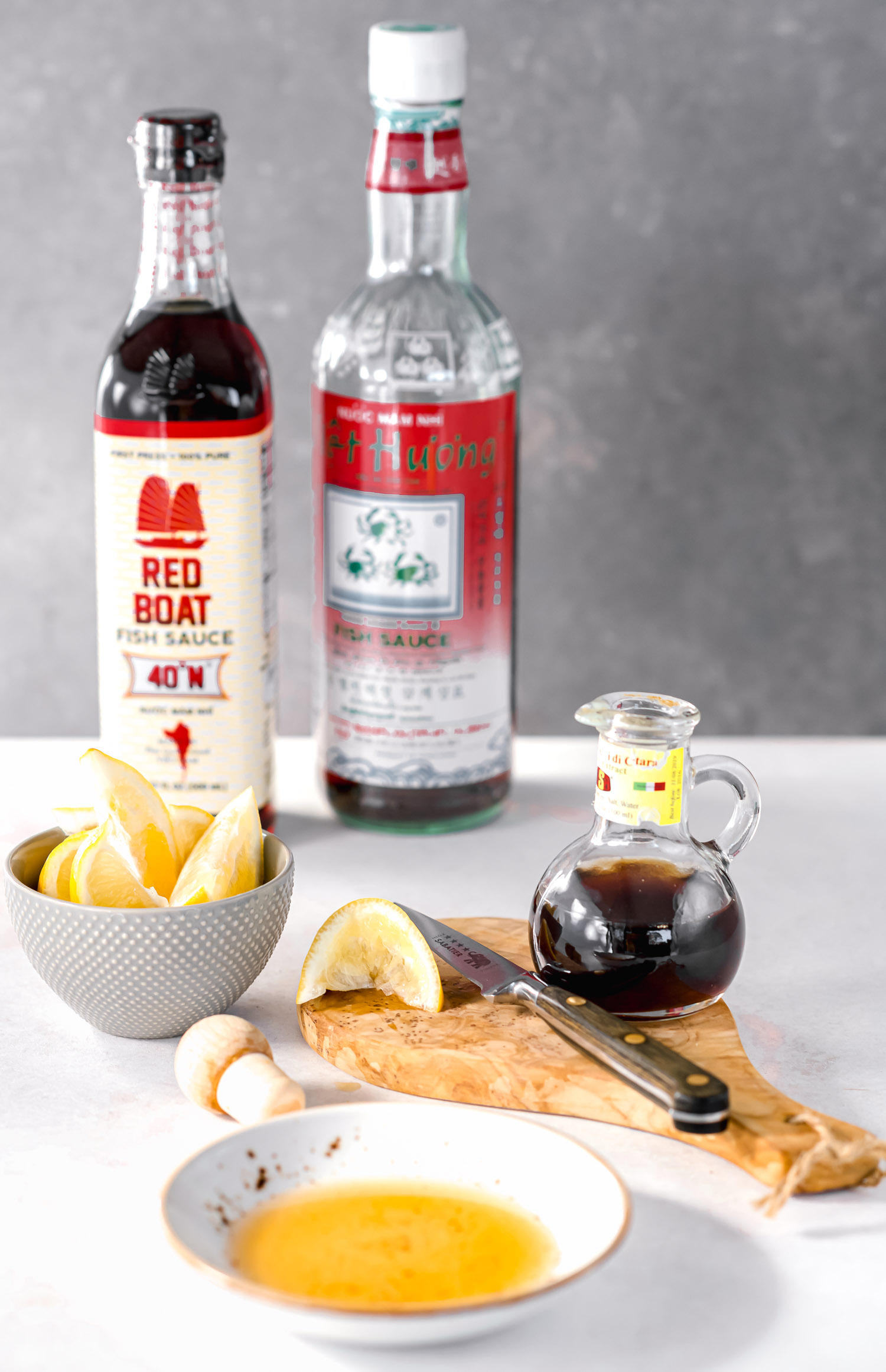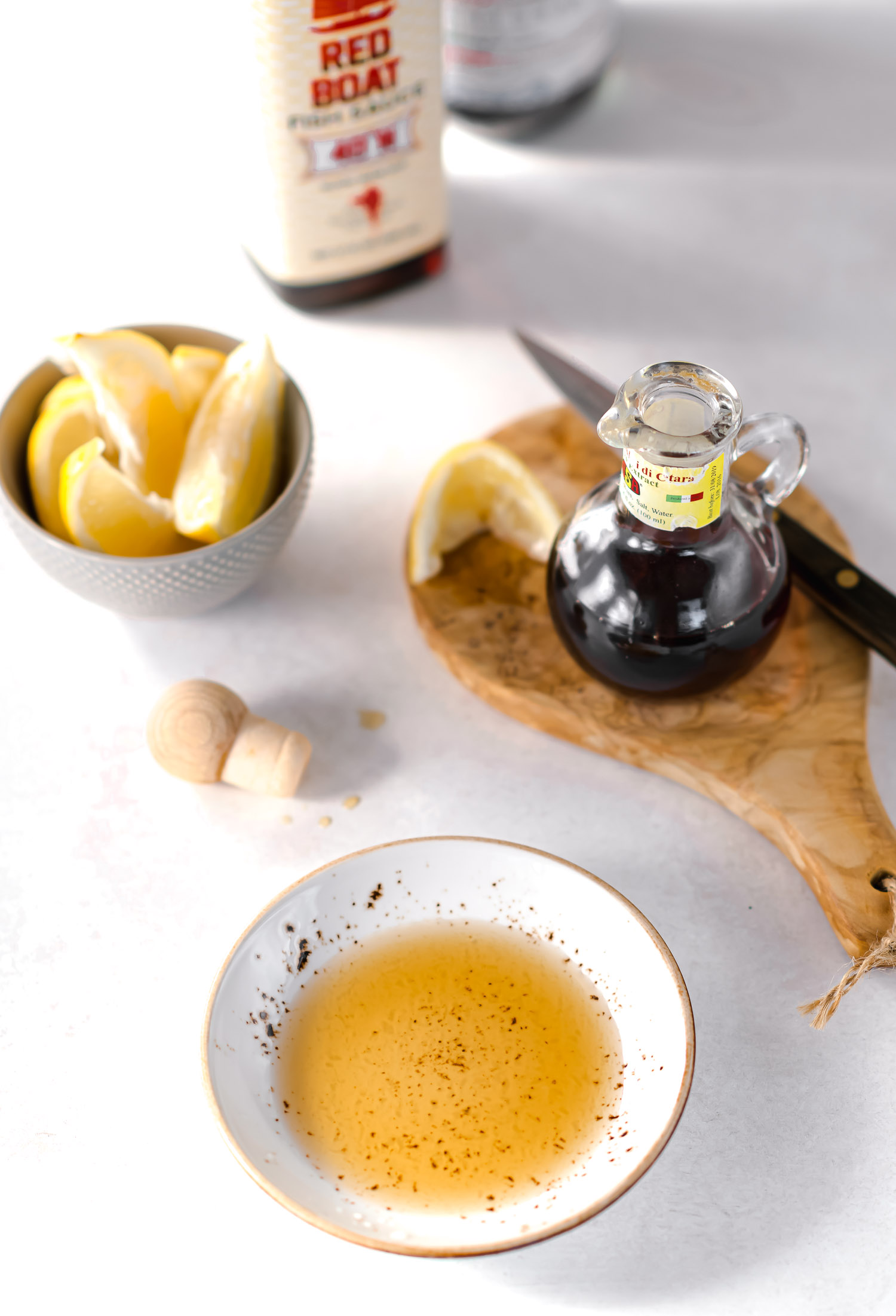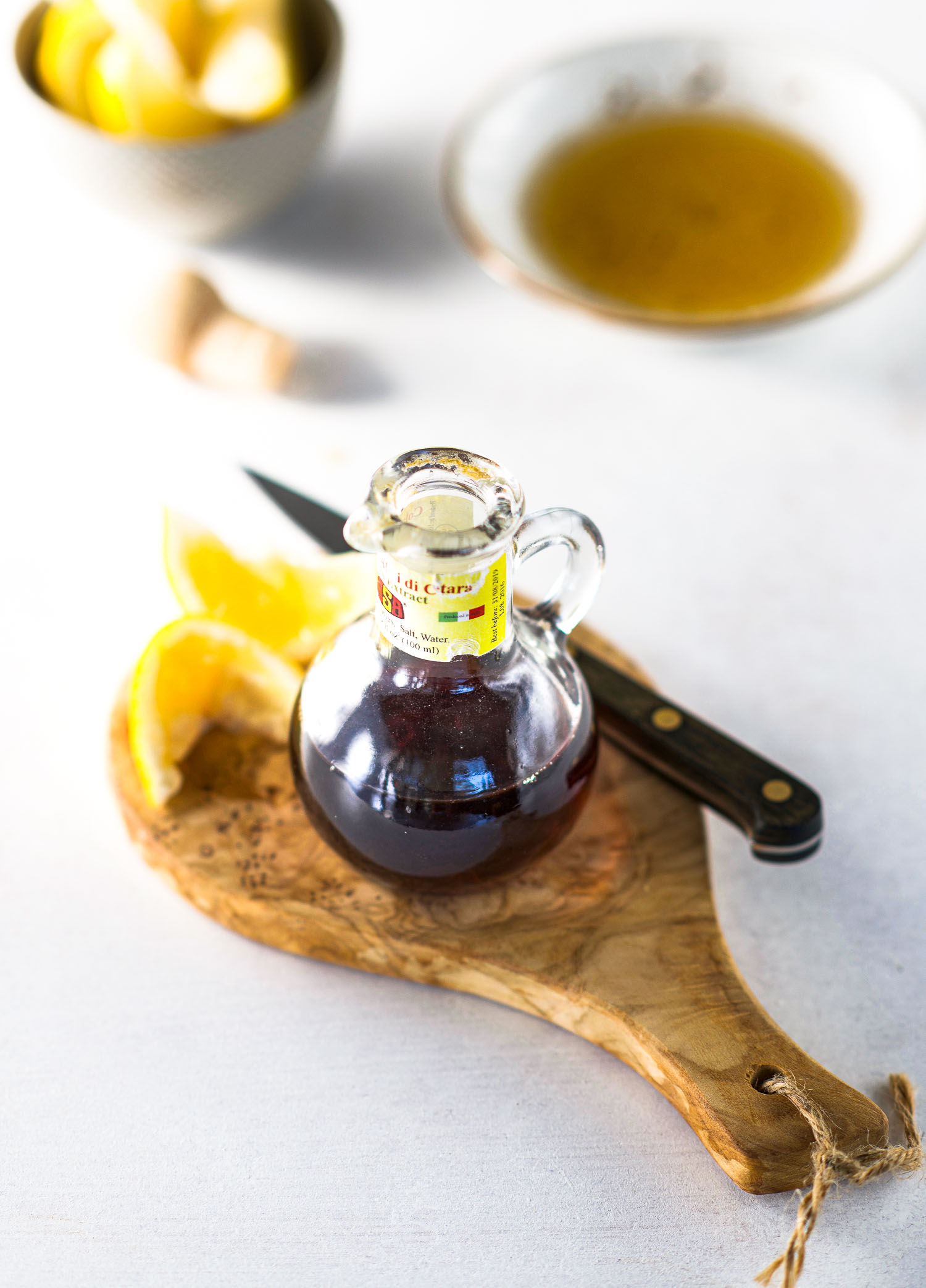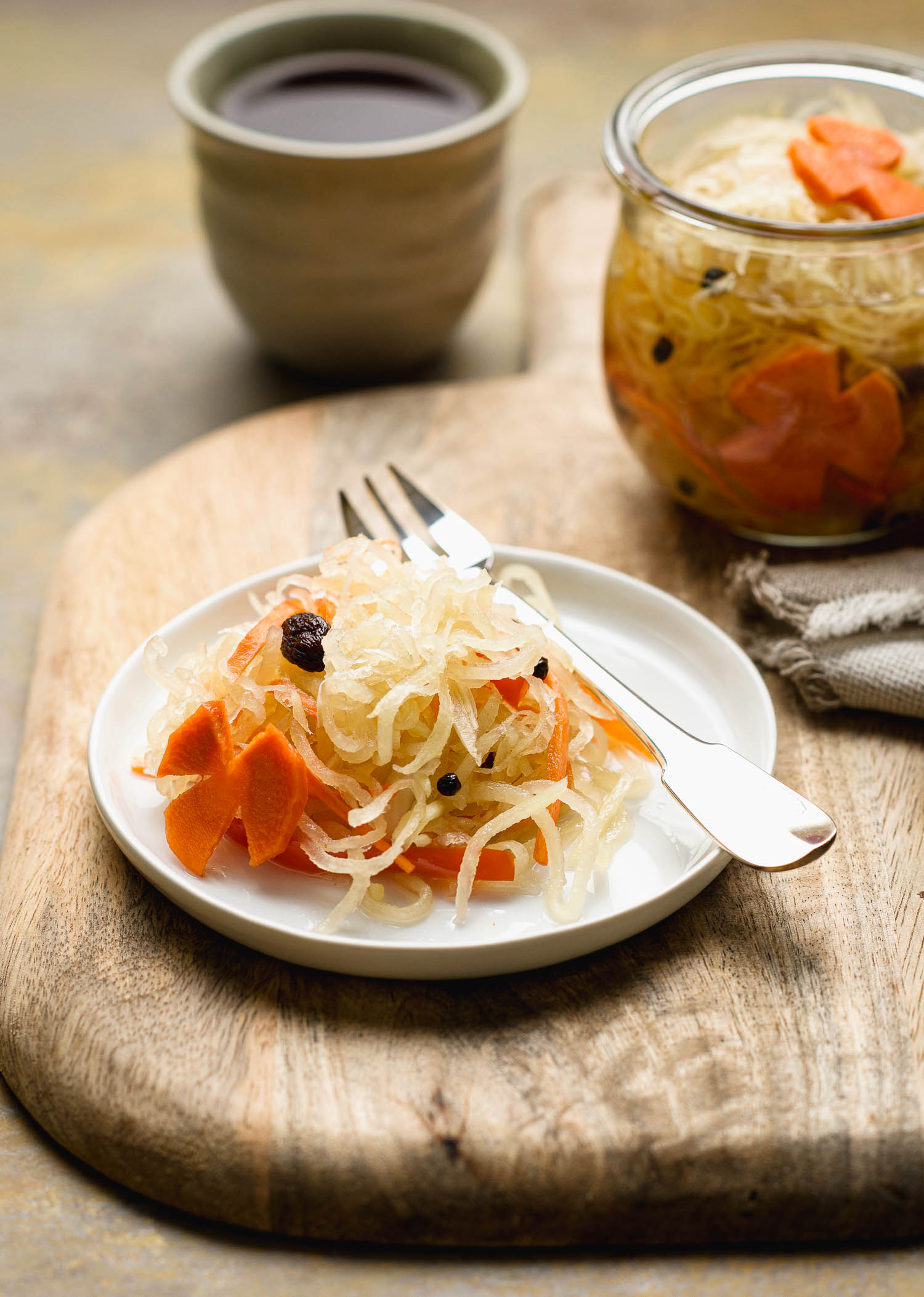What’s in my Pantry: Fish Sauce
Have you ever been tempted to peek into your friends’ cupboards to see what foods or ingredients they like to stock up on? This new series is my way of opening my pantry doors to you, one favorite item at at time.

I feel like this series has been a long time coming but the idea didn’t occur to me until earlier this year. Sharing recipes with you for almost 10 years now it’s only right that I finally give you a peek inside my pantry…one item at a time, at least.
Hopefully, if you also happen to be new to cooking and have landed on this page for inspiration maybe this new segment of the blog will make shopping for new ingredients less of a hassle. I’ll share my favorite spices, condiments, ingredients and how I use them. In all honesty, I may share primarily from-scratch recipes here but who has time to make that happen every single day? I have some go-to prepared foods that save me when time is short so I’ll share those, too. Let’s get this series started.

What is Fish Sauce?
Fish sauce is not so much the exotic ingredient it once was but it still gives some cooks pause. As you’ve guessed, fish sauce is made with fish, typically anchovies, fermented for one to two years. The fish breaks down and the concentrated liquid that’s produced from this fermentation process is salty, briny, pungent, umami-rich and wonderful with soft sweet notes depending on the quality you use but to some, it’s just downright funky. But I say, don’t be afraid of it.
Uses for Fish Sauce
Though fish sauce is most associated with Thai, Vietnamese or Filipino cooking it’s not just for Asian food. Ancient Greece and Rome had garum, their version of a fermented fish condiment. And while you may not see garum on the ingredient list of your favorite pasta recipes these days Italian fish sauce is available in the market today as Colatura di Alici (translation: anchovy drippings). At roughly $20 for the tiny bottle you see in these pictures, my Italian fish sauce is the most expensive I’ve ever bought so it’s not what I would recommend for everyday use but I appreciate having it as a special item in my pantry.
The umami boost fish sauce provides goes a long way. When I prepare marinara, pomodoro or any other quick sauce using tomatoes, it’s my go-to for cutting acidity and adding depth without the long cooking time. In fact, way, way back in the blog archives–circa 2010–I shared that fish sauce was my key ingredient in the tomato component of my Huevos Rancheros recipe and that hasn’t changed.
But in Filipino cooking fish sauce–we call it patis (puh-tees)–is not only essential for seasoning most of our dishes but it’s a common table side condiment, too. You might be familiar with Thai nam pla or Vietnamese nuoc cham but do you know how Filipinos use fish sauce at the table? Here are just a few ways:
Sawsawan: Filipino Dipping Sauces and Condiments
- Fish Sauce on its own or with sliced chilies: typically served alongside dishes with high acidic component like adobo or sinigang (a sour tamarind-based soup similar to Thai tom yum).
- Fish Sauce with lemon or calamansi juice: this is what I have in my pictures for this post. Lemon juice is served with a little fish sauce for an additional shot of brightness and depth to certain dishes. This combination is most popular for pancit–or Filipino noodle dishes. Most of the pancit recipes I have in the archives use patis in the recipe and I recommend this condiment to serve with all of them. I also like this with grilled fish, chicken and other meats when served with rice.
- Chopped fresh tomatoes with fish sauce: This is one of my favorite accompaniments for grilled or baked fish. A little fish sauce on chopped tomatoes (great with soy sauce, too) is wonderful with salmon or other rich fish. This recipe for Broiled Salmon, Brussels Sprouts and Garlic Brown Rice shows how I serve tomatoes with soy sauce but it works exactly the same way with fish sauce.
- Vinegar, chopped garlic, minced onions and fish sauce: This dipping sauce would be typical for fried lumpia (Filipino egg rolls) or grilled pork or any fatty fried foods.

Tips on Fish Sauce
- Smell: If you’ve never used fish sauce before you may be put off by its pungent quality. Again, a little goes a long way but the fish sauce smell won’t linger in your dish. If you’re adding it to a hot skillet while you’re sautéing aromatics for example, the fish sauce will give off a strong smell but it will quickly cook away. If you’re adding it to soup or stew you won’t smell anything at all. There’s no foul odor when it’s served as a dipping sauce or condiment at the table.
- Shelf life: I’ve never had fish sauce go bad on me so don’t worry if you’ve had a bottle sitting in your pantry for even a couple of years and you’ve recently rediscovered it. It will be safe to use and there’s no need to refrigerate it.
- It won’t make your food taste fishy: For the small amounts required in recipes, fish sauce will add umami but not a fishy taste.
- Use it sparingly when adding to recipes: Anywhere from just a splash to one or two tablespoons depending on the recipe is usually enough.
- Fish Sauce Substitutes: For some Filipino dishes I’ve shared here, my pancit dishes for example, soy sauce makes for a good substitute but not for everything. Soy sauce has a distinct flavor while fish sauce will add umami to a dish but won’t necessarily dominate it.
Where to Buy Fish Sauce and Brands I Like
Some years ago my husband and I rented an apartment on the French Riviera so I could shop the farmers market, cook and pretend to be a local for a month. The supermarket in tiny Beaulieu-Sur-Mer, the neighboring town where we did our shopping stocked small bottles of fish sauce so I had to add one to my shopping basket. This is to say that you can probably find it in most corners of the world these days. Here in California it’s stocked by all my local stores but if you’re in a small town with not a lot of sources for international foods, Amazon is your friend.
If you need fish sauce for a recipe and there’s only one brand offered at your store, use that. You’ll get the same results in my recipes. But as someone who has used it all my life, I do have my favorites. Red Boat is pricier but it’s smoother and more refined than most other Asian brands. The other bottle in my pictures shows the Three Crabs brand and is my other recommendation–it’s considerably cheaper than Red Boat and doesn’t have the harsh saltiness of other lesser labels.
Here are Some of my Recipes Using Fish Sauce
- Classic Pad Thai
- Chicken Afritada (Filipino Chicken Stew)
- Pancit Bihon
- Sotanghon Guisado
- Pancit Palabok
- Huevos Rancheros











I only used Red Boat fish sauce. And anchovy syrup, but I can’t remember the town in Italy where it’s made right off the top of my head…